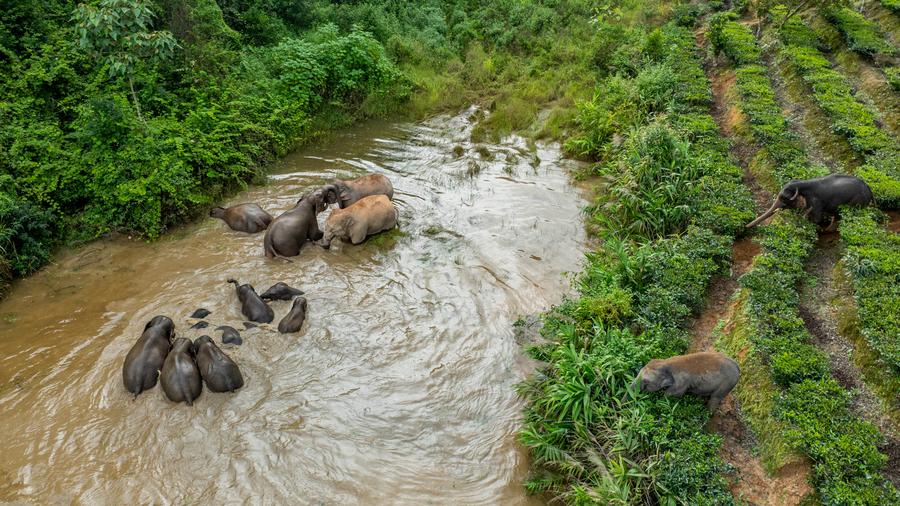
An aerial drone photo taken on Aug. 7, 2024 shows elephants playing in a pond in Dadugang Township in the city of Jinghong, southwest China's Yunnan Province. (Xinhua/Hu Chao)
The populations of rare and endangered wild species steadily increased in China as the country's biodiversity conservation efforts continued to produce notable results, official data showed Thursday.
More than 200 species of rare and endangered wild animals across the country have shown population recovery, while over 100 endangered plant species have been brought under emergency protection, according to the National Forestry and Grassland Administration.
The total number of overwintering waterbirds recorded in China reached nearly 5.06 million last year, a record high since nationwide monitoring began, the administration said.
These achievements are underpinned by China's solid efforts to protect wildlife and restore ecosystems.
In recent years, the country has accelerated the construction of a nature reserve system centered on national parks, published a catalog of critical terrestrial wildlife habitats, and launched habitat restoration and monitoring programs.
Moreover, national conservation and research centers have been established for the giant panda, Asian elephant, and crested ibis. Nearly 40 rare and endangered plant species have been successfully reintroduced into the wild, while the protection and monitoring of migratory bird corridors have been pushed forward to safeguard vital flyways.
Thanks to the measures, China's biodiversity continues to improve.
In Sanjiangyuan National Park, the Tibetan antelope population has surged from fewer than 20,000 in the early 1980s to over 70,000. In the Giant Panda National Park, which spans Sichuan, Shaanxi and Gansu provinces, 13 ecological corridors have been constructed, securing habitats for over 70 percent of wild pandas.
Additionally, more than 2,800 new living plant species have been collected in the China National Botanical Garden, including 110 nationally protected and 65 rare and endangered species.
Looking ahead, the administration pledges to accelerate the development of the nature reserve system and improve the ex-situ conservation network comprising botanical gardens, germplasm banks and wildlife rescue and breeding centers.
Efforts will also be made to implement major biodiversity projects and combat illegal wildlife trade to strengthen biodiversity protection, according to the administration.
















